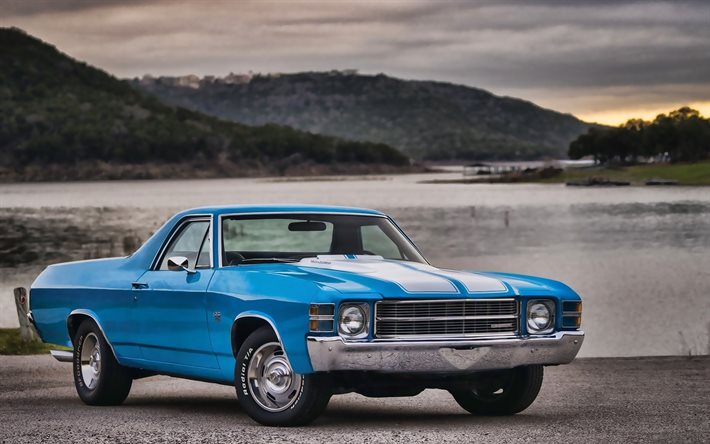
Many retro cars are available for those who still love the look of classic cars. The Ford Mustang and Honda S660 are great places to start. Other popular cars for retro lovers include the Mini Cooper and Chevrolet SS. Let's see which of these cars would suit you the best. These cars are not your usual vehicles. They are status symbols that will make them the best choice for any driver.
Ford Mustang
The popularity of retro cars is increasing among younger buyers, so Ford has launched a new Mustang model to appeal to this younger market. The average buyer is 51, but the new model will appeal to a younger crowd. It features many retro elements such as a shark-like front, three-element taillamps and radial chromed exhaust vents. The steering wheel is retro-inspired with three spokes.

Honda S660
The Honda S660, a retro modern car, has a classic look and a very affordable price. It will come with a midmounted engine and rear-wheel drive. The S660 will retail at around 2,000,000 yen. That is less that $16,500 in the United States. It will be able to compete with front-wheel drive cars such as Daihatsu Copen. The S660 is available with either the standard engine or the turbo engine. This turbo-turbo engine has a DOHC three-cylinder engine and produces 64 horsepower. It can also rev up to 7,700rpm. The 6-speed manual transmission features a CVT which allows for gear changes. It will retail for $16,500 Japan-wide, though there is no plan to export it.
Mini Cooper
Mini Cooper is one the most famous classic cars in the world. It still sells in large numbers. The original Mini Cooper is still a popular choice for classic car enthusiasts. Restomods, like the 2015 Mini Cooper, are quite popular. Despite all its modern features, the classic Mini Cooper still has the same iconic 1960s design. Let's take you through some of the highlights this retro car has to offer.
Chevrolet SS
The Chevrolet SS is a perfect combination of modern and old school, but not quite old-school. The Chevrolet SS's soft, large shape looks just like a Detroit car, but it also has many modern features. It comes standard with heated leather seats. Other features include automatic parallel parking, lane departure warnings, and blind spot monitoring. The SS features a full-sized spare tire and Chevrolet's MyLink system. It also has an automatic transmission, dual zone climate control and a mode selector.
Nissan Micra
The Nissan Micra was released in 1997. It was one among the most successful cars that year. In 1998, the car was given a facelift and continued to be manufactured from then until 2003. The facelift was notable for its updated exterior styling, which features a chromed extended V motif that holds the Nissan badge. Its bumper and headlamps were replaced with LEDs. New seats, a redesigned centre console and air vents were added to the vehicle. Also, new fabric seat and door pads were installed.

Citroen Alpine A110
Citroen Alpine A110 has a unique look and is a modern retro vehicle. The A110 has a high roof with an 1130mm ground clearance. Its interior is compact with plenty of space for children and adults. Its suspension features a steel backbone chassis, with coil springs and front wishbones. Although the A110 is a small car it feels agile and responsive at low revs. The car's brakes are strong and the steering is well balanced. It has a very fruity exhaust note that gives it a feeling of vitality and energy.
FAQ
Can I work as an auto mechanic without a degree? Do I have to study part-time?
It is not essential, but it is helpful. Employers prefer applicants who have completed a full-time degree. It shows that you've worked hard and are determined to succeed.
You can still study while working, however. Some universities allow students the flexibility to finish coursework during summer vacations and resume their studies later in year. Other universities permit students to take classes part-time during the school year.
What is the difference in a mechanic and an auto technician?
The two are similar but not identical. A mechanic repairs cars and an automotive technician performs maintenance.
A mechanic needs to be able and quick to use their manual dexterity. A mechanic should also be able accurately diagnose and repair problems.
An automotive technician is required to have more technical knowledge than a mechanic. They must be capable of reading blueprints and using tools such as drills, wrenches, etc.
They should also be capable of safely performing complex procedures. They must also be familiar with different types of engines and electrical systems.
They should also be able understand how different parts interact.
As a result, mechanics typically make less than technicians. Both jobs offer many possibilities.
What are the requirements for an automotive technician?
You must have graduated high school or GED, with excellent English and math grades. You must also be able to read, and write. You will need to pass a written test and then go through a series of practical exams before being allowed to start work.
How can I prepare to become a mechanic apprentice?
It is vital to be able to comprehend what you are doing. You need to understand the mechanics of cars and how they work. This will allow you to be prepared for your first day at work.
You will also need to learn how to fix simple problems like tires and broken lights.
This will teach you how to diagnose problems and fix them yourself.
You'll also need to know how different parts fit together to put them back together again.
And finally, you must know how to use tools safely and efficiently.
All these things will help you to become a competent mechanic.
Statistics
- 52% of Mechanics in the United States think their salaries are enough for the cost of living in their area. (indeed.com)
- According to the BLS, total auto technician employment is expected to exceed 705,000 by 2030. (uti.edu)
- There were 749,900 jobs available for automotive service technicians and mechanics in 2016, which is expected to grow by six percent through 2026. (jobhero.com)
External Links
How To
How to become an automotive technician
A technician who works on vehicles is an automotive technician. He/she works in car dealerships as well as auto shops, garages, and service centers. He/she helps customers fix their cars, trucks, motorcycles, ATVs, boats, lawn mowers, snowmobiles, tractors, trailers, farm equipment, planes, helicopters, jet skis, watercraft, bicycles, motorcycles, scooters, golf carts, etc. An automotive technician must be capable of diagnosing problems and making repairs safely, accurately and efficiently.
If you want to be an automotive technician, you need an associate degree from vocational school. After completing this program the student must pass the National Institute for Automotive Service Excellence exam (ASE). ASE stands as American Society of Mechanical Engineers. There are two sections to the ASE certification test. One section tests mechanical knowledge; the second section tests practical skills. You must attend one of the authorized testing sites to take the test. These locations can be found online or at your local auto dealer.
After passing the test, a candidate must pass a state examination before becoming licensed as an automotive technician. The process will vary depending on where an applicant lives. For example, some states require candidates to attend a training course, while others allow them to study independently. Some states require technicians to be licensed immediately upon receiving their license. Other states wait until they have been employed as automotive technicians for at least six month.
To get started as an automotive technician, a person should apply to a local automotive dealership. Most new employees work as apprentices after they have been hired. Apprenticeships typically last three years. The apprenticeship program teaches students how to change oil, adjust brakes, replace tires, clean spark plugs, inspect engine compartments, and perform routine maintenance. Some students will learn advanced repair techniques, such as changing shocks, installing air filters, and replacing engines. Most schools offer classes during regular business hours. However, there are some schools that offer evening classes for those who need them.
Once a student finishes his/her apprenticeship, it is possible to become a Journeyman. Journeymen usually spend four to five year learning how to install major systems like transmissions, differentials steering gear, suspensions, drive shafts, and steering gear. They are also taught how to troubleshoot electrical components and remanufacture engines. Many employers prefer to hire Journeymen because they understand the job well.
Candidates who pass the required exams are eligible for a license. According to Bureau of Labor Statistics (2010), almost 1.7million automotive mechanic jobs were on the market. This number is expected to increase by 18% between 2009 and 2020. The candidate should expect to invest thousands of money in equipment and supplies if he/she decides to start his/her shop.
There are many factors that affect the salary of an automotive technician, such as where they live, their education and experience. An average salary for a jobless individual is $20,000 per annum. A high school diploma is all that's required to earn approximately $21,000 annually. Earnings for those with an associate's diploma are approximately $24,000/year. Technicians with a bachelor’s degree made about $27,000 annually. The average annual salary for those with master's degrees was $32,000. Salary increases are common, so a professional who earns less than $30,000 now could reasonably expect to earn $40,000 or more in just a few years.